
Reduced is a modern free web application that reduces the length of a link URL so it’s easier to remember, share and track. In other words, Reduced is an Open-Source URL Shortener. Convert those ugly and long URLs into short, easy to manage links and QR-Codes. If you want to run a more complex and advanced URL shortener, take a look at my Slash Installation guide or Shlink Installation guide. If you want to run a simple UI URL shortener, take a look at my Lynx Installation guide. In this step by step guide I will show you how to install Reduced on your Synology NAS using Docker and Portainer.
STEP 1
Please Support My work by Making a Donation.
STEP 2
Install Portainer using my step by step guide. If you already have Portainer installed on your Synology NAS, skip this STEP. Attention: Make sure you have installed the latest Portainer version.
STEP 3
Make sure you have a synology.me Wildcard Certificate. Follow my guide to get a Wildcard Certificate. If you already have a synology.me Wildcard certificate, skip this STEP.
STEP 4
Go to Control Panel / Login Portal / Advanced Tab / click Reverse Proxy. Follow the instructions in the image below.

STEP 5
Now click the “Create” button. Follow the instructions in the image below.
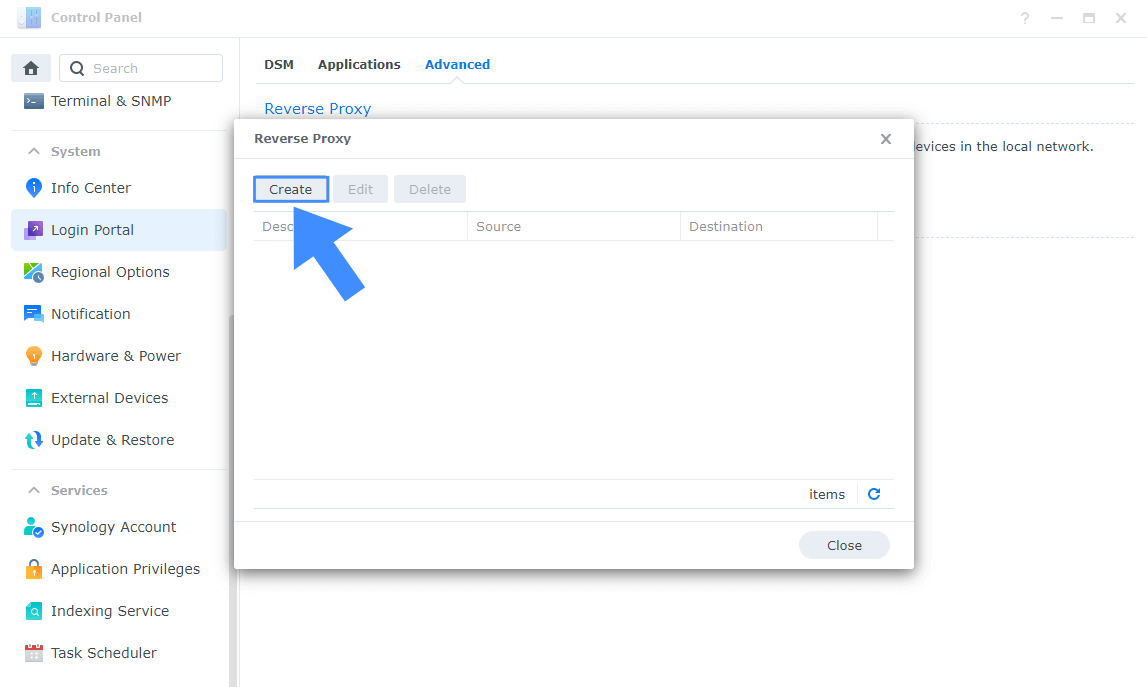
STEP 6
After you click the Create button, the window below will open. Follow the instructions in the image below.
On the General area, set the Reverse Proxy Name description: type in Reduced. After that, add the following instructions:
Source:
Protocol: HTTPS
Hostname: reduced.yourname.synology.me
Port: 443
Check Enable HSTS
Destination:
Protocol: HTTP
Hostname: localhost
Port: 8302
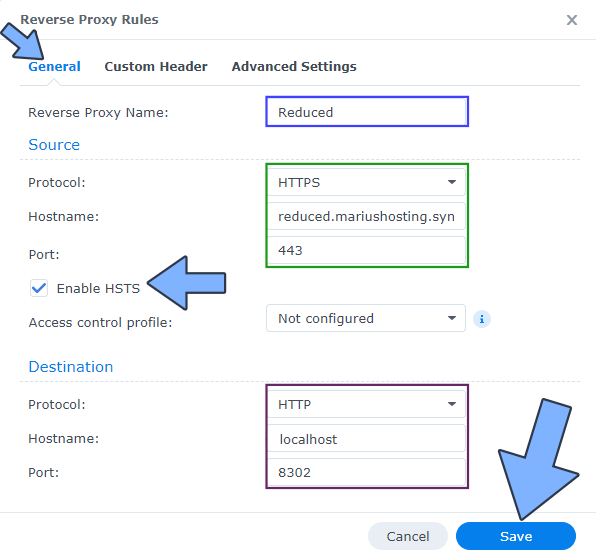
STEP 7
On the Reverse Proxy Rules click the Custom Header tab. Click Create and then, from the drop-down menu, click WebSocket. After you click on WebSocket, two Header Names and two Values will be automatically added. Click Save. Follow the instructions in the image below.

STEP 8
Go to Control Panel / Network / Connectivity tab/ Check Enable HTTP/2 then click Apply. Follow the instructions in the image below.
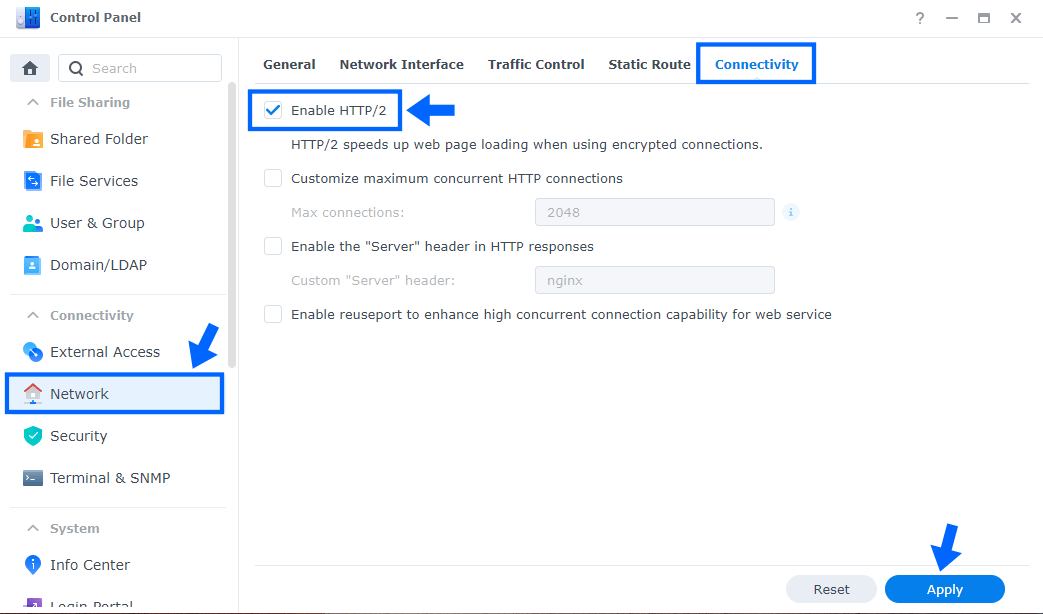
STEP 9
Go to Control Panel / Security / Advanced tab/ Check Enable HTTP Compression then click Apply. Follow the instructions in the image below.
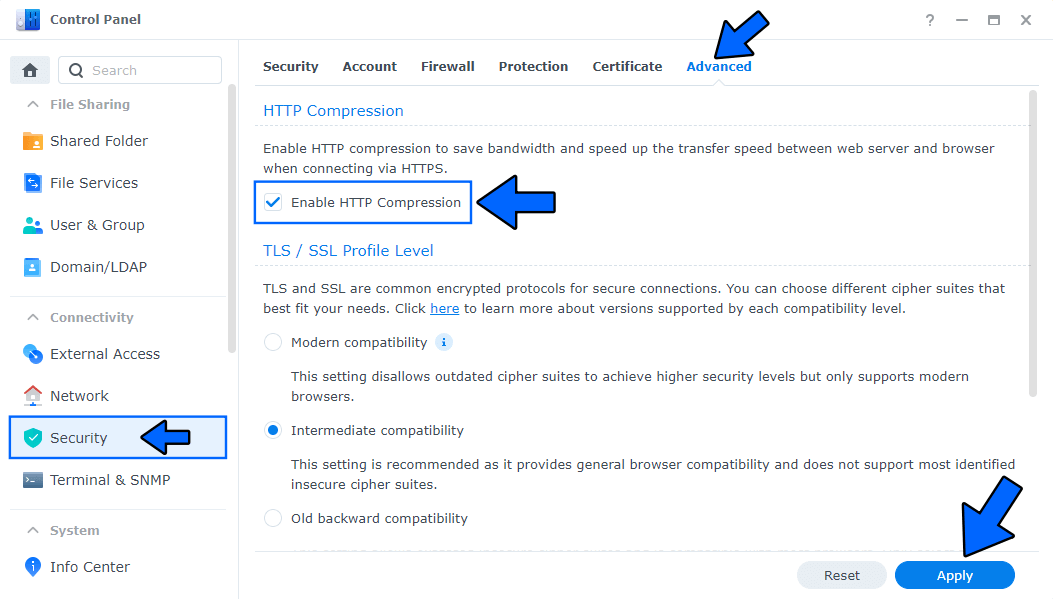
STEP 10
Go to File Station and open the docker folder. Inside the docker folder, create one new folder and name it reduced. Follow the instructions in the image below.
Note: Be careful to enter only lowercase, not uppercase letters.
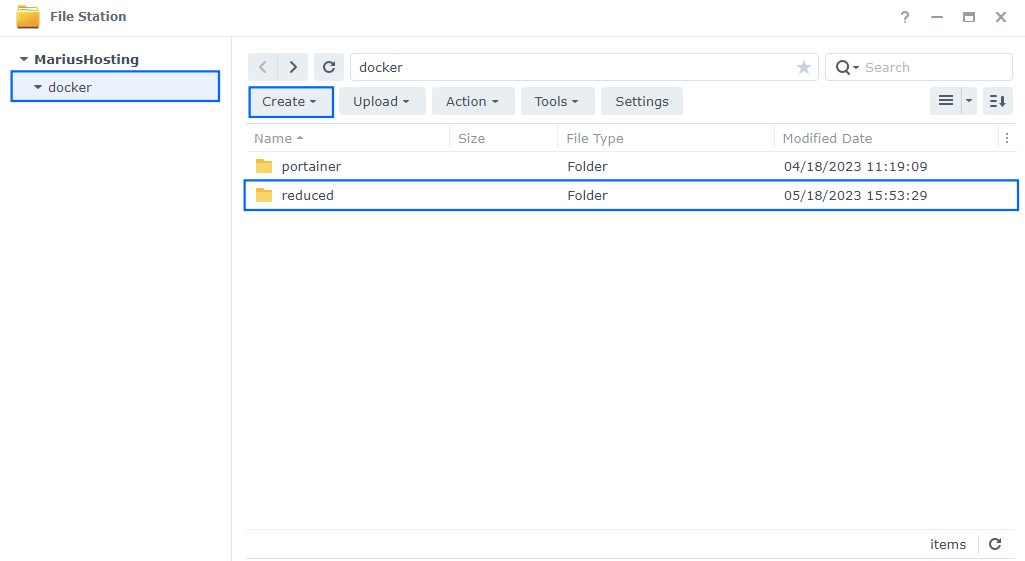
STEP 11
Now create two new folders inside the reduced folder that you created at STEP 10 and name them db and redis. Follow the instructions in the image below.
Note: Be careful to enter only lowercase, not uppercase letters.
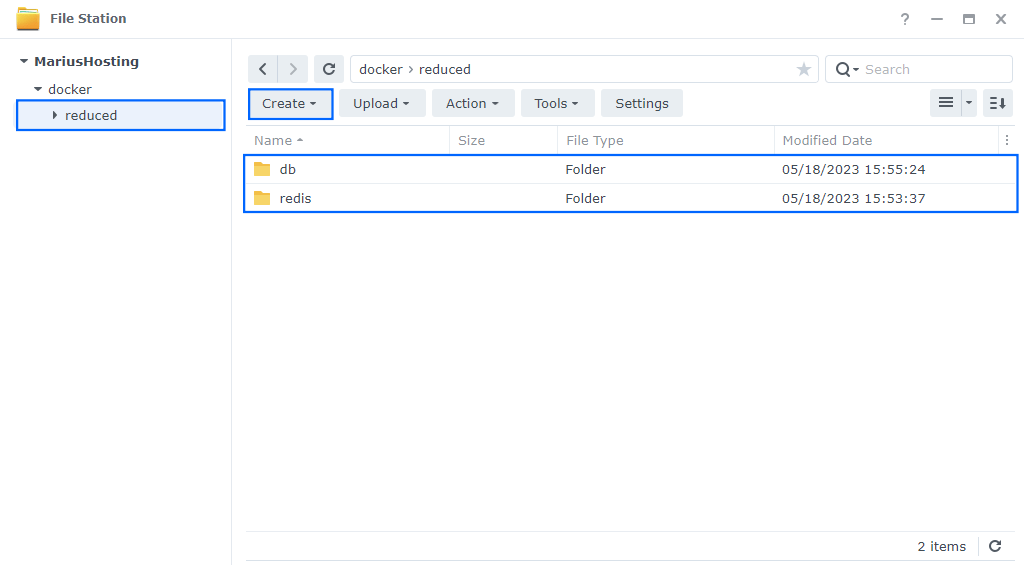
STEP 12
Log into Portainer using your username and password. On the left sidebar in Portainer, click on Stacks then + Add stack. Follow the instructions in the image below.

STEP 13
In the Name field type in reduced. Follow the instructions in the image below.
version: "3.9"
services:
redis:
image: redis
command:
- /bin/sh
- -c
- redis-server --requirepass redispass
container_name: Reduced-REDIS
hostname: reduced-redis
mem_limit: 256m
mem_reservation: 50m
cpu_shares: 768
security_opt:
- no-new-privileges:true
read_only: true
user: 1026:100
healthcheck:
test: ["CMD-SHELL", "redis-cli ping || exit 1"]
volumes:
- /volume1/docker/reduced/redis:/data:rw
environment:
TZ: Europe/Bucharest
restart: on-failure:5
db:
image: postgres
container_name: Reduced-DB
hostname: reduced-db
mem_limit: 512m
cpu_shares: 768
security_opt:
- no-new-privileges:true
user: 1026:100
healthcheck:
test: ["CMD", "pg_isready", "-q", "-d", "reduced", "-U", "reduceduser"]
timeout: 45s
interval: 10s
retries: 10
volumes:
- /volume1/docker/reduced/db:/var/lib/postgresql/data:rw
environment:
POSTGRES_DB: reduced
POSTGRES_USER: reduceduser
POSTGRES_PASSWORD: reducedpass
restart: on-failure:5
backend:
image: ghcr.io/origranot/reduced.to/backend:master
container_name: Reduced-BACK
hostname: reduced-back
mem_limit: 1g
cpu_shares: 768
security_opt:
- no-new-privileges:true
healthcheck:
test: stat /etc/passwd || exit 1
environment:
APP_PORT: 3000
RATE_LIMIT_TTL: 60
RATE_LIMIT_COUNT: 10
FRONT_DOMAIN: http://reduced-front:5000
DATABASE_URL: postgresql://reduceduser:reducedpass@reduced-db:5432/reduced?schema=public
REDIS_ENABLE: true
REDIS_HOST: reduced-redis
REDIS_PORT: 6379
REDIS_PASSWORD: redispass
REDIS_TTL: 604800 # 1 week
JWT_ACCESS_SECRET: MariushostingMariushostingMari13
JWT_REFRESH_SECRET: MariushostingMariushostingMari14
# NOVU_API_KEY: Get it from https://novu.co/
restart: on-failure:5
depends_on:
db:
condition: service_healthy
redis:
condition: service_healthy
frontend:
image: ghcr.io/origranot/reduced.to/frontend:master
container_name: Reduced-FRONT
hostname: reduced-front
# mem_limit: 256m
cpu_shares: 768
security_opt:
- no-new-privileges:true
user: 1026:100
healthcheck:
test: wget --no-verbose --tries=1 --spider http://localhost:5000/
environment:
API_DOMAIN: http://reduced-back:3000
DOMAIN: localhost
ports:
- 8302:5000
restart: on-failure:5
depends_on:
backend:
condition: service_healthy
Note: Before you paste the code above in the Web editor area below, change the value numbers for user with your own UID and GID values. (Follow my step by step guide on how to do this.) 1026 is my personal UID value and 100 is my personal GID value. You have to type in your own values.
Note: Before you paste the code above in the Web editor area below, change the value for TZ. (Select your current Time Zone from this list.)
Note: Before you paste the code above in the Web editor area below, change the value for JWT_ACCESS_SECRET and add your own JWT ACCESS SECRET. MariushostingMariushostingMari13 is an example for a JWT ACCESS SECRET. You should invent your own Value. Add 32 random characters, both letters and numbers.
Note: Before you paste the code above in the Web editor area below, change the value for JWT_REFRESH_SECRET and add your own JWT REFRESH SECRET. MariushostingMariushostingMari14 is an example for a JWT REFRESH SECRET. You should invent your own Value. Add 32 random characters, both letters and numbers.
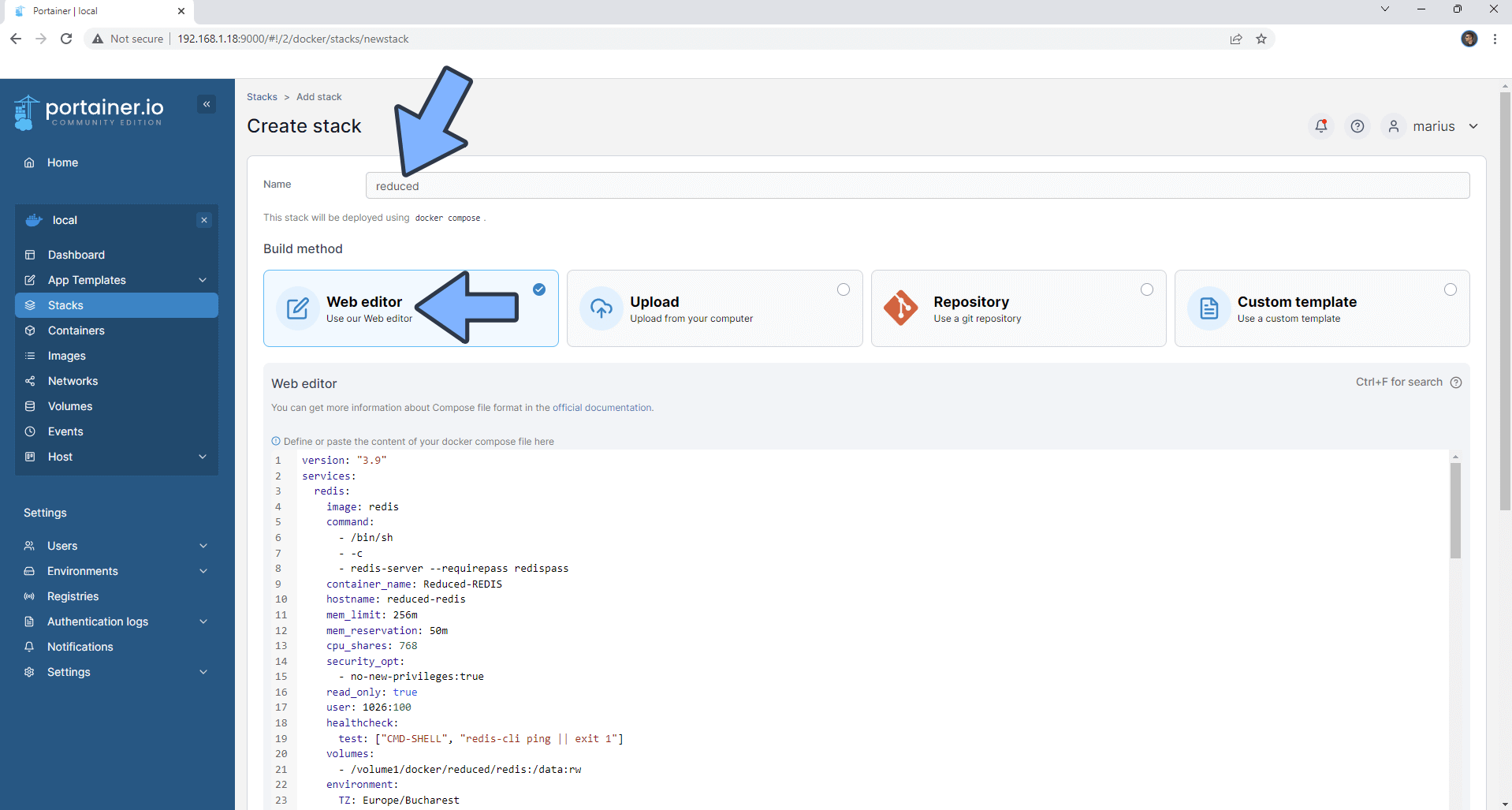
STEP 14
Scroll down on the page until you see a button named Deploy the stack. Click on it. Follow the instructions in the image below. The installation process can take up to a few minutes. It will depend on your Internet speed connection.
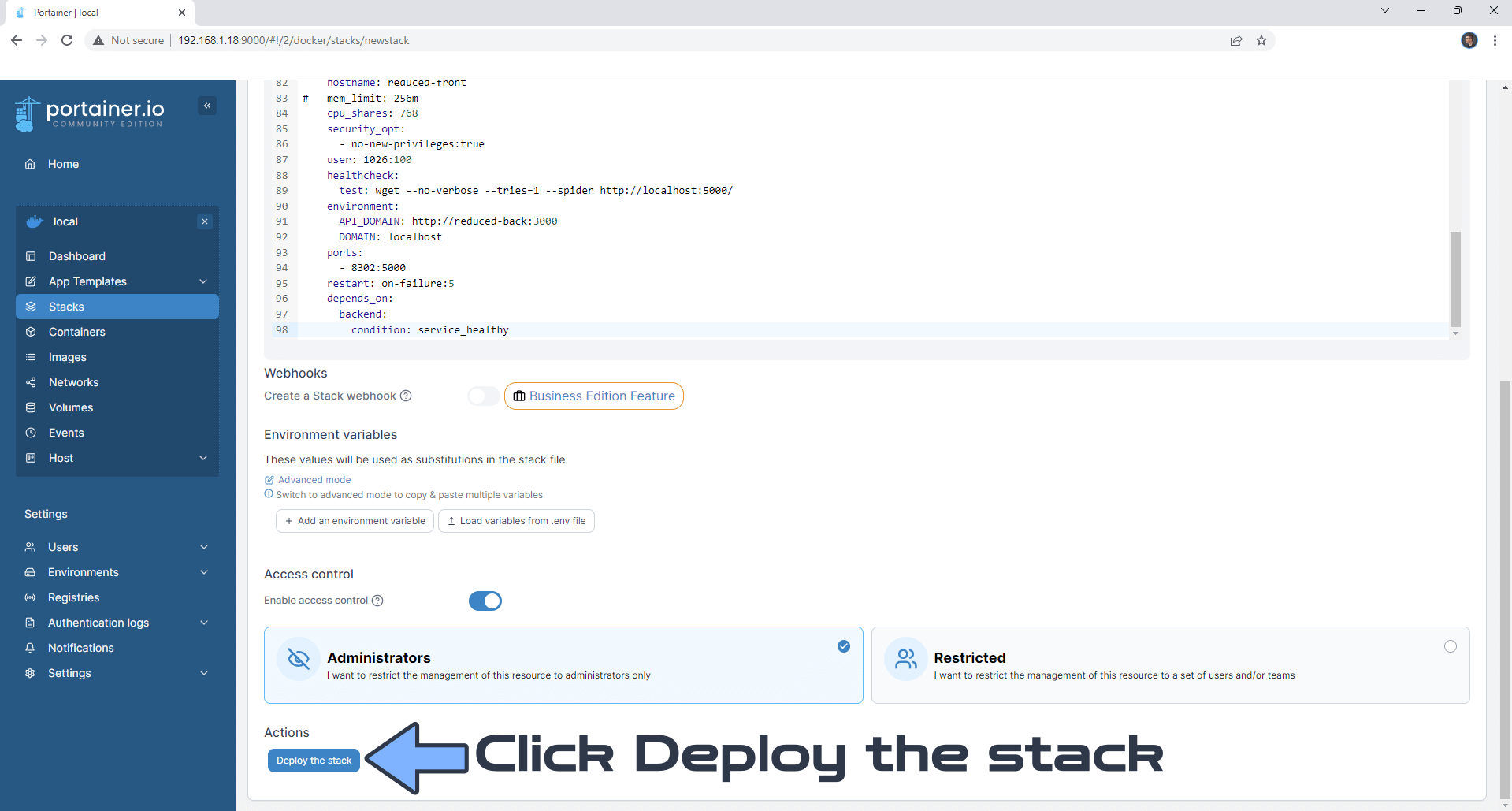
STEP 15
If everything goes right, you will see the following message at the top right of your screen: “Success Stack successfully deployed“.
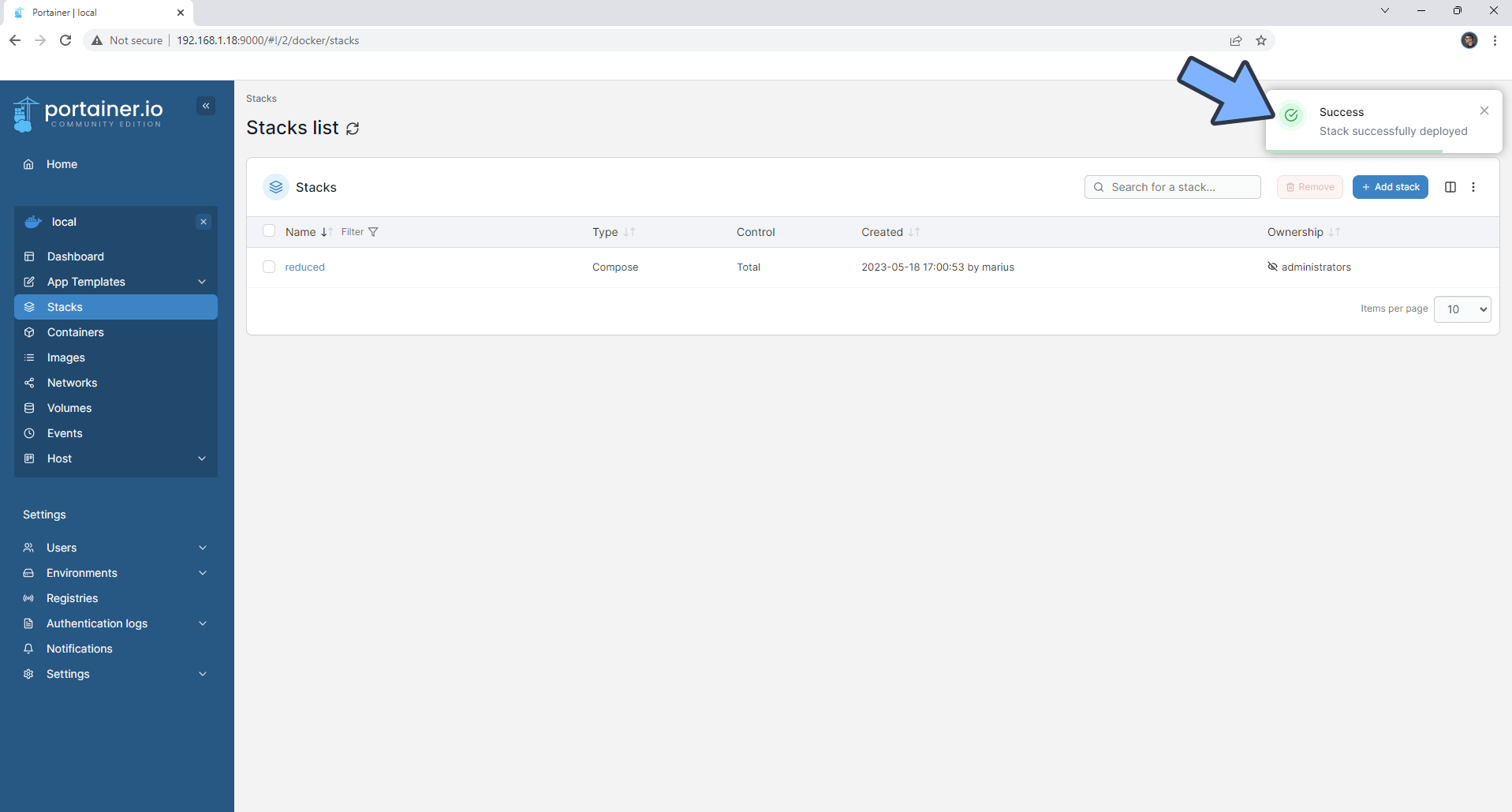
STEP 16
🟢Please Support My work by Making a Donation. Almost 99,9% of the people that install something using my guides forget to support my work, or just ignore STEP 1. I’ve been very honest about this aspect of my work since the beginning: I don’t run any ADS, I don’t require subscriptions, paid or otherwise, I don’t collect IPs, emails, and I don’t have any referral links from Amazon or other merchants. I also don’t have any POP-UPs or COOKIES. I have repeatedly been told over the years how much I have contributed to the community. It’s something I love doing and have been honest about my passion since the beginning. But I also Need The Community to Support me Back to be able to continue doing this work.
STEP 17
Now open your browser and type in your HTTPS/SSL certificate like this https://reduced.yourname.synology.me In my case it’s https://reduced.mariushosting.synology.me If everything goes right, you will see the reduced main page. Type in a long link then click SHORTEN URL to shorten your very long URL into an URL with fewer characters. Follow the instructions in the image below.

STEP 18
You can also switch to the Dark Mode theme. Follow the instructions in the image below.
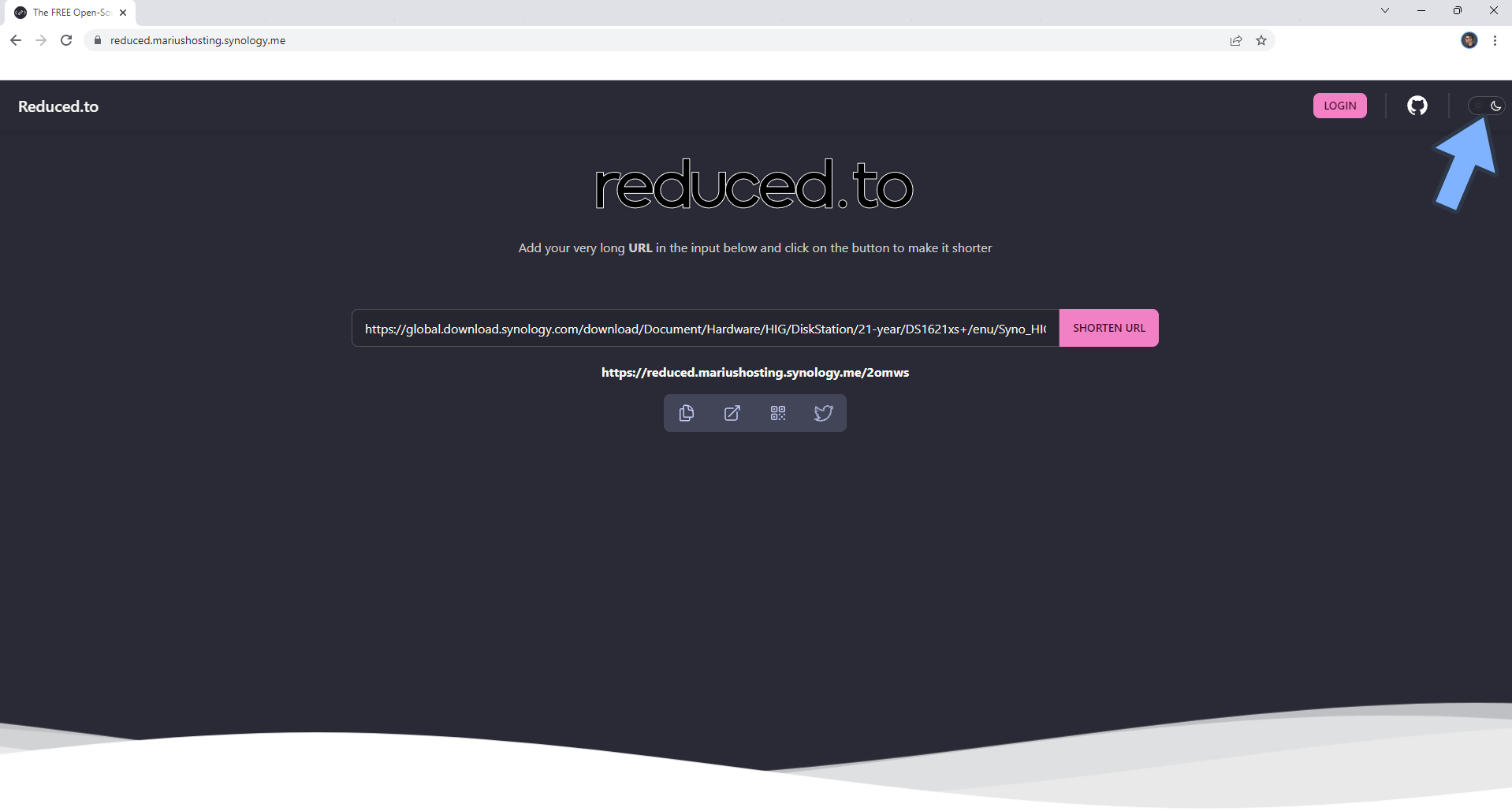
Enjoy Reduced!
If you encounter issues by using this container, make sure to check out the Common Docker issues article.
Note: Find out how to update the Reduced container with the latest image.
Note: How to Back Up Docker Containers on your Synology NAS.
Note: Can I run Docker on my Synology NAS? See the supported models.
Note: How to Free Disk Space on Your NAS if You Run Docker.
Note: How to Schedule Start & Stop For Docker Containers.
Note: How to Activate Email Notifications.
Note: How to Add Access Control Profile on Your NAS.
Note: How to Change Docker Containers Restart Policy.
Note: How to Use Docker Containers With VPN.
Note: Convert Docker Run Into Docker Compose.
Note: How to Clean Docker.
Note: How to Clean Docker Automatically.
Note: Best Practices When Using Docker and DDNS.
Note: Some Docker Containers Need WebSocket.
Note: Find out the Best NAS Models For Docker.
Note: Activate Gmail SMTP For Docker Containers.
This post was updated on Wednesday / January 8th, 2025 at 1:53 AM
